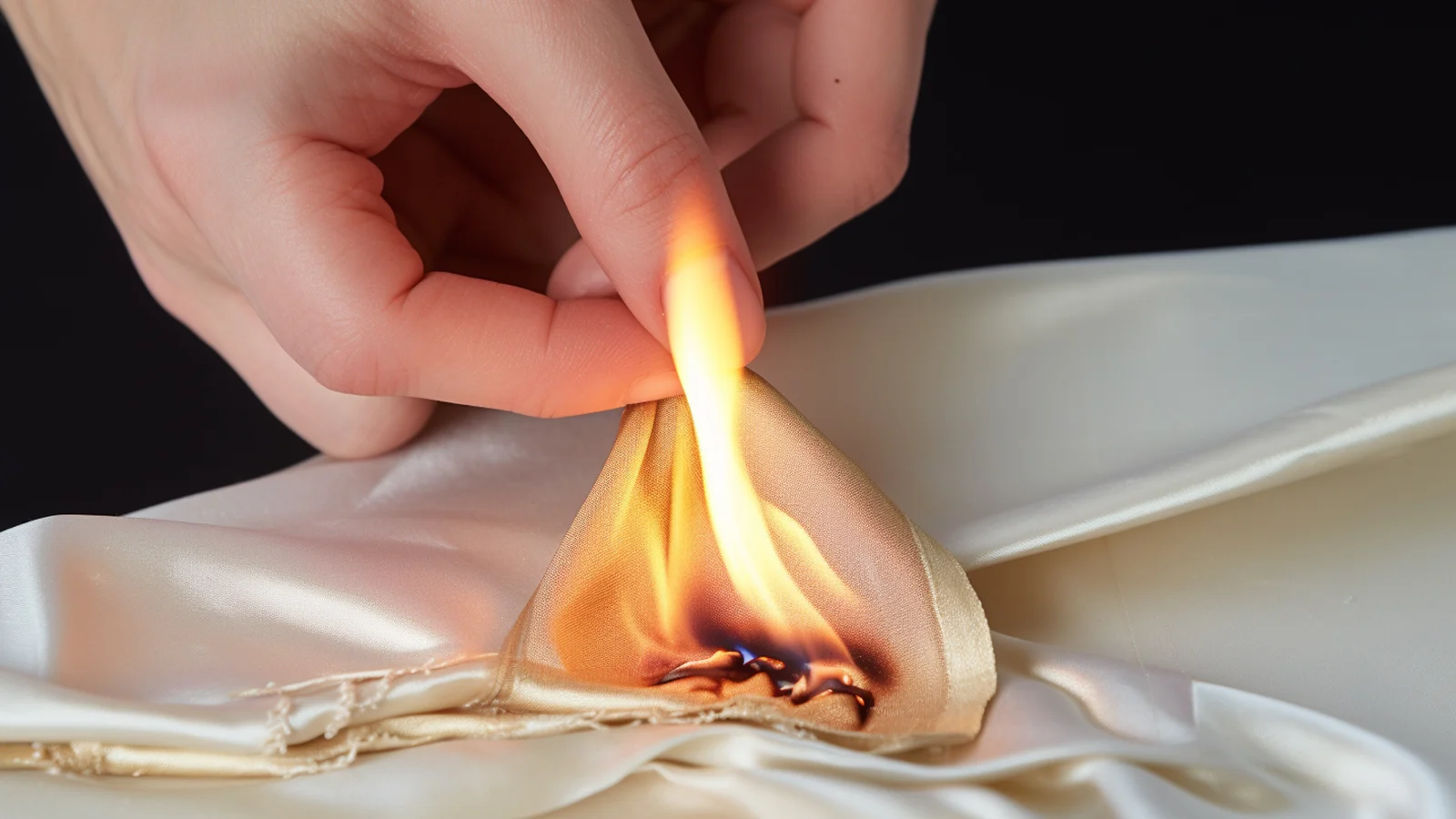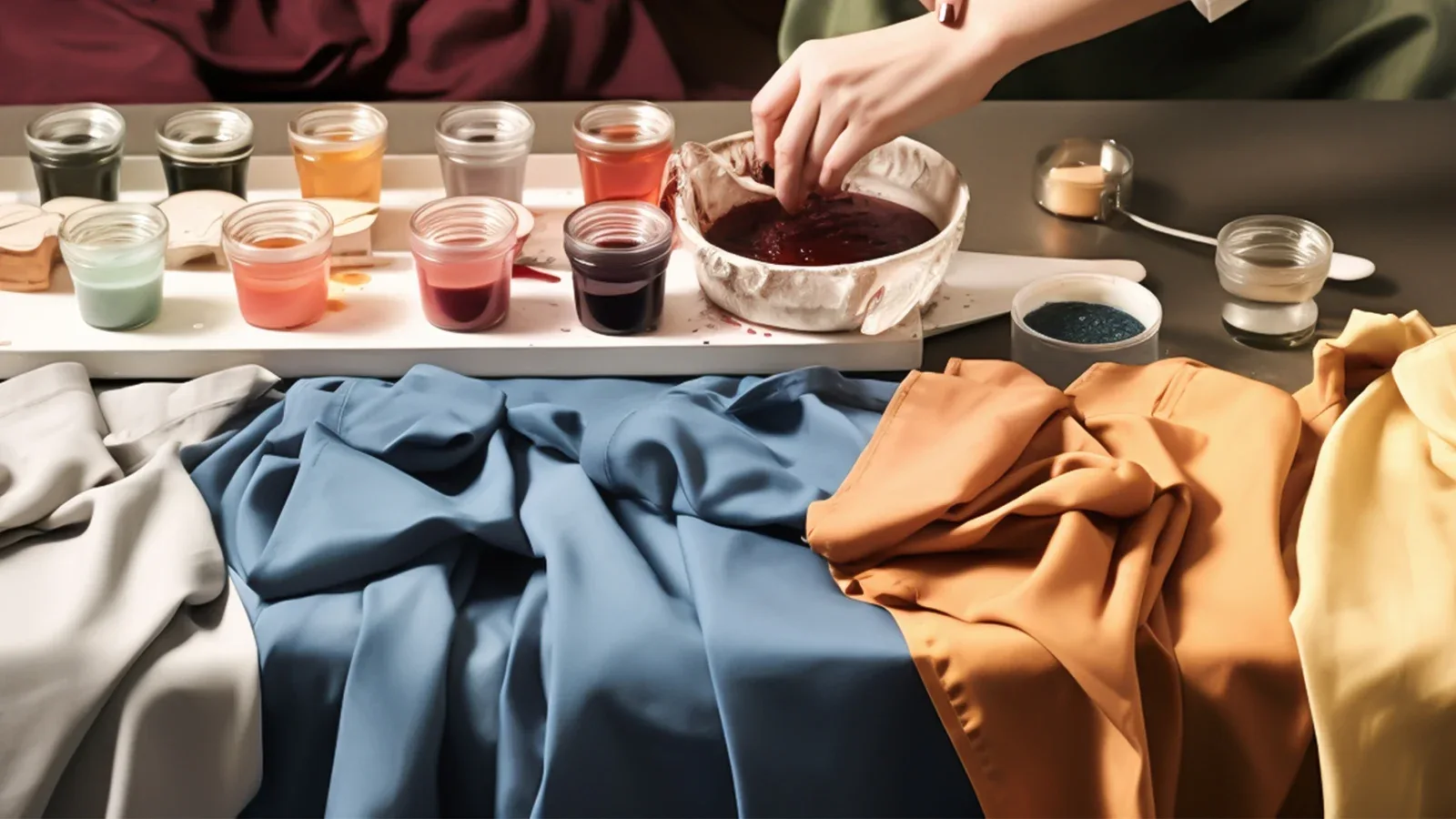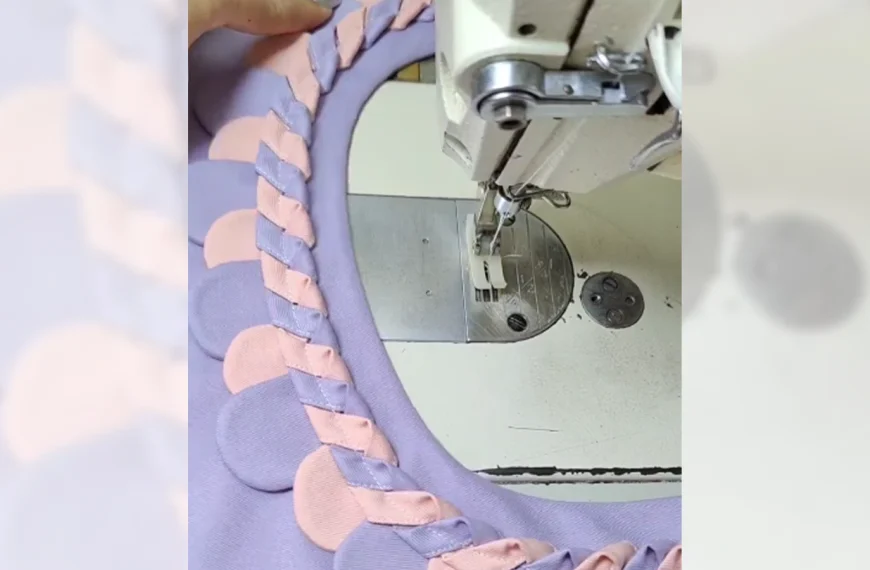Dyeing satin fabric needs a deep understanding of textile chemistry and precise application of techniques to maintain its inherent sheen and texture.
Before the dyeing process, first, identify the specific type of satin. Each fiber reacts differently to dyes and treatments. The choice of dye depends on the type of fabric and the intended result.
Pre-treatment of the fabric, controlled dye application, and proper post-dye handling are critical procedures. They will influence the evenness of color and the preservation of satin’s signature smoothness.
This blog will help you learn how to dye satin fabric to achieve a beautifully colored fabric that retains its luxurious quality.
Understand the Fiber of Your Satin
Determining the fiber composition of satin is crucial in selecting the appropriate dye method.
Check the Label

Before starting the dyeing process, examine the garment’s label to find out the specific type of fiber used in your satin fabric. It is essential to identify whether the satin is composed of polyester, silk, acetate, or nylon. Because the dyeing method must be compatible with the predominant fiber.
For instance, fiber-reactive dye is suitable for plant-based fibers like cotton or silk. But it would not be effective on synthetic fibers such as polyester or acetate satin. Conversely, disperse dye is specifically formulated for synthetic fibers.
Burn Test

When the label on your satin fabric is missing or unclear, conduct a burn test to determine its fiber content for appropriate dyeing.
To perform the test, safely ignite a lighter and briefly expose a small, inconspicuous thread from the satin weave to the flame. Observe the fabric’s reaction meticulously. Polyester or acetate will usually melt and may emit black smoke. Other fibers will exhibit differing responses.
Once you remove the flame, note whether the fabric self-extinguishes or continues burning. The burn test’s results will inform the dye selection.
Types of Dyes to Use
How do you select the appropriate dye, considering its specific fiber composition?
To achieve the best results, one must use:
Fiber-reactive dye:
- Ideal for cellulose fibers such as cotton or rayon, which are sometimes found in satin blends.
- These dyes create a covalent bond with the fiber. They ensure a vibrant and washfast color.
- Not suitable for synthetic fibers. Because they lack the necessary functional groups to react with the dye.
Disperse dyes:
- Specially formulated to dye polyester and acetate fibers, commonly used in synthetic satin.
- They work by dispersing at high temperatures and then sublimating into the fiber.
- These dyes need carrier agents to enhance the dye uptake at a molecular level.
Acid dyes:
- Best suited for protein fibers like silk, which is a common component of satin fabric.
- They rely on ionic bonding and the presence of an acidic pH to bind to the fiber.
- Not effective for dyeing cellulose or synthetic fibers.
Selecting the type of dye based on the satin’s fiber composition is essential. For example, to dye silk satin, an acid dye is preferable. Conversely, when looking to dye polyester satin, disperse dyes are the most effective. Understanding the fabric’s fiber composition and the corresponding dye type ensures optimal dye uptake and colorfastness.
How to Dye Satin Fabric: Polyester and Acetate Satin
Dyeing polyester and acetate satin requires careful preparation. These synthetic materials are resistant to color change, necessitating the application of specific dyes and techniques to ensure the uptake of color. The molecular structure of polyester and acetate satin does not allow for the absorption of liquid. This is why you need disperse dyes, which are designed to penetrate these dense fibers.
Start by preparing the dye bath. The temperature of the bath is critical. Apply disperse dyes at high temperatures to ensure that the dye molecules can sublimate and diffuse within the tight fiber structure. Usually, keep the dye bath at a near-boiling point for the duration of the dyeing process.
Once the dye bath has reached the desired temperature, put the pre-washed polyester or acetate satin. Keep the material at a consistently high temperature. You can put it at a rolling boil for at least 30 minutes. This allows the disperse dye to vaporize and then condense onto the fabric’s fibers, ensuring a thorough and even application of color.
Constant agitation of the fabric in the dye bath is also essential. This ensures that the dye can reach all areas of the fabric and prevents uneven coloration. After the dyeing is complete, the fabric should be rinsed in cold water until the water runs clear. The final step is to dry the fabric, which should be done carefully to avoid any heat damage that might alter the newly acquired color.
How to Dye Satin Fabric: Silk Satin
While dyeing silk satin, you need to use acid dyes and maintain a lower-temperature dye bath. Silk satin, being a protein-based natural fiber, requires specific dye types and careful handling to ensure the integrity of the material and the vibrancy of the color.
To effectively dye silk satin, follow these technical steps:
Preparation:
- Pre-wash the silk satin to remove any impurities that may interfere with dye absorption.
- Prepare the acid dye bath by following the manufacturer’s instructions. Ensure the dye is completely dissolved.
Dyeing Process:
- Submerge the silk satin gently into the dye bath. Keep the temperature below boiling point (around 185°F or 85°C) to avoid damaging the fibers.
- Stir continuously to promote even color uptake and prevent the formation of splotches or uneven shades.
Post-Dyeing Care:
- Rinse the fabric in lukewarm water until the water runs clear to remove excess dye.
- Hang the fabric to air-dry. Silk satin is susceptible to heat damage from tumble dryers.
When hand dyeing silk satin, it is crucial to use fiber-reactive dye if you need a long-lasting color. These dyes form a covalent bond with the silk fibers, ensuring that the color remains even after multiple washes.
How to Dye Satin Fabric: Nylon Satin
When dyeing nylon satin, it is important to use acid dyes and control the temperature of the dye bath.
The process begins by dissolving the acid dye in water, to which salt has been added. This solution acts as the dye bath for the nylon satin. The presence of salt is critical. It promotes the absorption of the dye by the fabric’s fibers, ensuring more uniform and intense color penetration.
Then heat the dye bath to a simmer, usually around 185°F (85°C), and maintain for approximately ten minutes. This step allows the dye molecules to become more active and ready to bond with the nylon fibers. After this period, incorporate vinegar and an acidic agent into the mixture and simmer for another ten minutes. The acid in the vinegar assists in fixing the dye to the nylon.
Once the dyeing process is complete, allow the garment to cool down before rinsing the dye. Rinsing with water removes any excess dye that has not bonded with the fabric. Doing so helps prevent the color from bleeding during later washes.
How to Dye Satin Fabric: Rayon Satin
To dye rayon satin, select a dyeing method that accommodates the unique properties of rayon. It’s a semi-synthetic fiber that responds differently to the dyeing process than fully synthetic materials. For rayon satin, a fiber-reactive dye is the most appropriate.
Pre-Treatment:
- Pre-wash the fabric to remove any finishes that may impede absorption.
- Treat the fabric with a mordant if necessary to improve dye uptake and colorfastness.
Dyeing Process:
- Dissolve the fiber reactive dye in warm water to achieve a uniform color concentration.
- Introduce the rayon into the dye bath and maintain consistent agitation to promote even color distribution.
Post-Dyeing:
- Rinse the fabric in warm water to remove excess dye without causing shrinkage.
- Hang the fabric away from direct sunlight to prevent color fading.
Conclusion
For successful dyeing of satin fabric, it is important to identify the fabric’s fiber content and select an appropriate dye. Using specific techniques tailored to different fabrics ensures optimal color saturation and retention. Meanwhile, doing so can preserve the fabric’s inherent characteristics.
It is crucial to follow precise dyeing protocols to achieve a uniform and long-lasting finish, which can enhance the satin material’s aesthetic appeal and lifespan.
FAQs
Can I Use Rit Dye on Satin?
You can use rit dye on satin materials composed of natural fibers or nylon. But, it is ineffective on polyester satin, which requires disperse dye due to its synthetic nature.
What Fabric Dye Is Best for Satin?
The optimal fabric dye for satin depends on its fiber composition: disperse dyes for polyester, reactive dyes for silk and rayon, and acid dyes for nylon to achieve uniform coloration and retention.
Can I Dye Satin Ribbon?
Yes, you can dye the satin ribbon using the appropriate fabric dye. The process involves submerging the ribbon in a dye bath and managing the temperature and time to achieve the desired color saturation.
What precautions should I take when dyeing satin fabric?
When dyeing satin fabric, it’s important to wear rubber gloves to protect your hands and ensure proper ventilation in the dyeing area. Additionally, be careful with the temperature, as satin is a relatively fragile fabric.
How do I determine the amount of dye needed for satin fabric?
The amount of dye needed for satin fabric depends on the weight of the fabric and the desired color intensity. It’s recommended to refer to the dye manufacturer’s instructions for guidance.
Can I use a pot on the stove to dye satin fabric?
Yes, you can use a pot on the stove to heat the dye and water for dyeing satin fabric. Just make sure to control the temperature and avoid boiling the fabric.
Is it safe to mix the dye into spray bottles when dyeing satin fabric?
Yes, you can mix the dye into spray bottles to apply the dye to the fabric evenly and create unique patterns, such as tie dye, on the satin fabric.
What is the importance of using soda ash when dyeing satin fabric?
You can use soda ash to help the dye chemically bond with the fabric fibers, ensuring long-lasting and vibrant color results when dyeing satin fabric.
How can I help the dye settle for good on the satin fabric?
To help the dye settle onto the satin fabric, rinse the fabric thoroughly after dyeing and let it air dry to ensure the dye sets properly.
Get more DIY tutorials on Longan Craft Blog! Dive into the fabric world with Longancraft!







